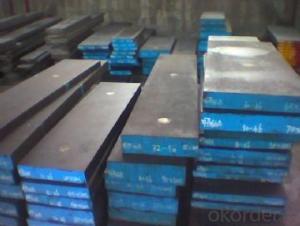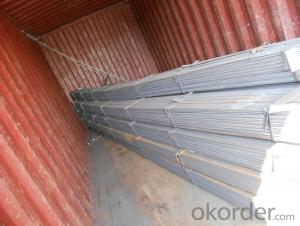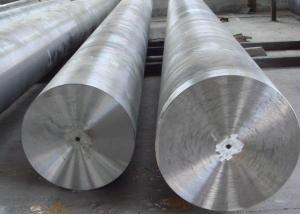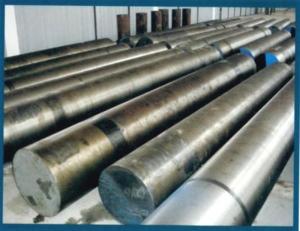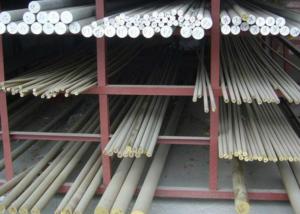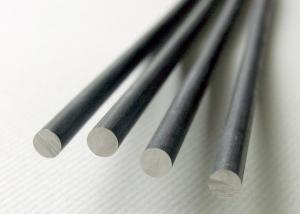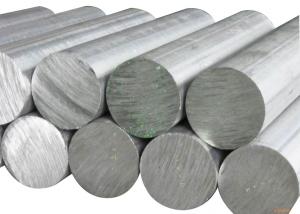Hot rolled Spring Steel Bar/billet/products JIS standard/Europe standard/ ASTM standard
- Loading Port:
- Shanghai
- Payment Terms:
- TT OR LC
- Min Order Qty:
- 50 m.t.
- Supply Capability:
- 1200 m.t./month
OKorder Service Pledge
OKorder Financial Service
You Might Also Like
Specifications
Spring steel flat bar
Garde: 60Si2Mn, 60Si2MnA, 55CrMnA,50CrVA
Standard GB,JIS,ASTM,DIN,AISI,BS
LF & VD forge;ISO&TUV appr
Materials
Q195,Q215,Q235B,Q345B,
S235JR/S235/S355JR/S355
SS440/SM400A/SM400B
Product Category
Metallurgy,Mineral &Energy
Technique
HOT ROLLED
Packing
1.Big OD:in bulk
2.Small OD:packed by steel strips
3.woven cloth with 7 slats
4.according to the requirements of customers
Usage
Mechanical&manufacture,Steel strcuture,
Shipbuilding,Bridging,Automobile chassis
Main market
Middle East,Africa, Asia and some Uropean country and America ,
Australia
Country of origin
China
Productivity
15000 Metric Tons pet Month
Remark
Payment terms :T/T ,L/C
Terms of trade :FOB ,CFR,CIF ,DDP,EXW
Minimum order : 10 tons
Lead time :on or before 3-15 working days .
- Q:Can special steel be used in the production of kitchen utensils?
- Yes, special steel can be used in the production of kitchen utensils. Special steel, such as stainless steel, offers excellent durability, corrosion resistance, and hygiene, making it a popular choice for kitchen utensils. It can withstand high temperatures, resist staining, and is easy to clean, making it suitable for various cooking and food preparation tasks.
- Q:What is the process of manufacturing special steel?
- The process of manufacturing special steel involves several steps to ensure the production of high-quality and durable steel with specific properties. 1. Raw Materials Selection: The first step is to carefully select the raw materials required for making special steel. This includes iron ore, coal, and other alloying materials such as chromium, nickel, and manganese, depending on the desired properties of the final product. 2. Melting: The selected raw materials are then melted in a large furnace, often through the use of electric arc furnaces or basic oxygen furnaces. These furnaces heat the raw materials to extremely high temperatures, typically around 1,600 to 2,000 degrees Celsius, to transform them into molten metal. 3. Refining: Once the raw materials are melted, the molten metal undergoes a refining process to remove impurities. This is done through techniques like degassing, desulphurization, and deoxidation, ensuring that the steel is free from unwanted elements that may negatively impact its properties. 4. Alloying: After refining, alloying elements are added to the molten metal to achieve the desired properties. These elements can modify the steel's strength, hardness, corrosion resistance, and other characteristics. The specific alloying elements and their proportions depend on the intended application of the special steel. 5. Continuous Casting: The molten steel is then poured into a continuous casting machine, which solidifies it into semi-finished products called billets, blooms, or slabs. This continuous casting process ensures a consistent and uniform structure throughout the steel. 6. Hot Rolling: The semi-finished products are then reheated and passed through a series of hot rolling mills. This process involves reducing the thickness and shaping the steel into various forms such as bars, rods, plates, or sheets, depending on the intended use. 7. Heat Treatment: After hot rolling, the steel may undergo heat treatment processes such as annealing, quenching, tempering, or case hardening. These treatments help to further enhance the mechanical properties of the steel, such as its hardness, toughness, and ductility. 8. Finishing: The final step involves surface finishing and quality control measures. The steel is inspected for any defects or imperfections that may have occurred during the manufacturing process. Surface treatments like pickling or galvanizing can also be applied to enhance the steel's appearance and protect it from corrosion. Overall, the process of manufacturing special steel is a complex and precise operation that requires careful selection of raw materials, melting, refining, alloying, continuous casting, hot rolling, heat treatment, and finishing. This ensures that the resulting steel meets the specific requirements and performance characteristics demanded by various industries.
- Q:What is the impact strength of special steel?
- The impact strength of special steel can vary depending on its composition and specific grade. However, special steel is generally known for its high impact strength, making it highly resistant to sudden shocks, impacts, and fractures.
- Q:Can special steel be used in marine environments?
- Indeed, marine environments can benefit from the utilization of special steel. Specifically engineered to endure the harsh conditions prevalent in marine settings, special steel, such as stainless steel or marine-grade steel, proves its worth. These environments typically expose materials to saltwater, which possesses a highly corrosive nature. Nonetheless, special steel's resistance to corrosion remains intact due to its elevated levels of chromium and other alloying elements. Consequently, it becomes exceedingly suitable for an array of marine applications, encompassing shipbuilding, offshore structures, and marine equipment. The reliability of special steel lies in its exceptional strength, durability, and corrosion resistance. Moreover, to further augment its resistance to corrosion, special steel can undergo additional treatment and coating, thereby guaranteeing its longevity and optimal performance in marine conditions.
- Q:What are the main advantages of using special steel in aerospace applications?
- The main advantages of using special steel in aerospace applications are its superior strength, toughness, and corrosion resistance. Special steel can withstand extreme temperatures and pressures, making it suitable for critical components such as engine parts and landing gear. Its high strength-to-weight ratio allows for lighter aircraft designs, improving fuel efficiency and performance. Additionally, special steel's excellent fatigue resistance ensures the long-term reliability and safety of aerospace structures.
- Q:How is wear-resistant tool steel used in the production of cutting tools?
- Wear-resistant tool steel is used in the production of cutting tools due to its exceptional hardness and resistance to wear and abrasion. This steel is specifically designed to maintain its sharpness and durability even when subjected to high temperatures and intense cutting forces. By using wear-resistant tool steel, cutting tools can effectively cut through various materials without losing their edge, resulting in improved efficiency and longer tool life.
- Q:Can special steel be used in the appliance manufacturing industry?
- Yes, special steel can be used in the appliance manufacturing industry. Special steels, such as stainless steel or high-strength steel, offer various advantages such as corrosion resistance, durability, and enhanced mechanical properties. These qualities make them suitable for manufacturing appliances that require high performance, such as refrigerators, ovens, or washing machines. Additionally, special steels can be customized to meet specific design requirements and can contribute to the overall aesthetic appeal of the appliances.
- Q:How does special steel contribute to reducing maintenance costs?
- Special steel contributes to reducing maintenance costs by offering enhanced durability, corrosion resistance, and wear resistance properties. This means that components made from special steel have a longer lifespan and require less frequent maintenance or replacement. Additionally, special steel can be designed to withstand extreme conditions, reducing the risk of failures and breakdowns, ultimately leading to lower maintenance costs.
- Q:What are the different methods of joining special steel components?
- Various techniques exist for joining special steel components, each offering unique advantages and applications. Welding, brazing, soldering, mechanical fastening, and adhesive bonding are among the most commonly used methods. 1. Welding represents a widely employed method for joining special steel components. It involves melting the base metals and adding a filler material to create a robust bond. Depending on the specific requirements and properties of the steel components, different welding techniques like arc welding, gas welding, or laser welding can be utilized. 2. Brazing utilizes a filler material with a lower melting point than the base metals. This material is heated and distributed between the components, forming a strong bond as it solidifies. Brazing is particularly suitable for high-temperature applications and can be performed using a torch, furnace, or induction heating. 3. Soldering is similar to brazing but employs a lower melting point filler material known as solder. It finds common use in electrical and electronic applications, as well as for joining small or delicate steel components. Soldering necessitates less heat and can be accomplished using a soldering iron or hot air gun. 4. Mechanical fastening involves joining components using mechanical means such as screws, bolts, nuts, or rivets. This method is often preferred when disassembly or reassembly is necessary, as it allows for easy removal and replacement of components. Mechanical fastening is suitable for applications requiring a strong and reliable joint, especially when welding or brazing may not be feasible. 5. Adhesive bonding is another method employed for joining special steel components. It entails applying an adhesive material to the mating surfaces, which then cures or hardens to create a robust bond. Adhesive bonding is commonly used when a continuous joint is required or when joining dissimilar materials. It offers advantages in applications necessitating vibration damping or sealing. The selection of the appropriate joining method depends on various factors such as the specific requirements of the application, the properties of the steel components, and the desired strength and durability of the joint. Each method has its own strengths and limitations.
- Q:How does special steel contribute to the electrical industry?
- Special steel plays a crucial role in the electrical industry by providing the necessary materials for the production of various electrical components and infrastructure. It offers high strength, thermal resistance, and corrosion resistance, making it ideal for manufacturing transformers, power generators, electrical motors, and transmission lines. Additionally, special steel enables the development of advanced electrical technologies, such as superconductors and magnetic materials, which enhance the efficiency and performance of electrical systems. Overall, special steel contributes to the electrical industry by ensuring the reliability, durability, and innovation of electrical equipment and infrastructure.
1. Manufacturer Overview |
|
|---|---|
| Location | |
| Year Established | |
| Annual Output Value | |
| Main Markets | |
| Company Certifications | |
2. Manufacturer Certificates |
|
|---|---|
| a) Certification Name | |
| Range | |
| Reference | |
| Validity Period | |
3. Manufacturer Capability |
|
|---|---|
| a)Trade Capacity | |
| Nearest Port | |
| Export Percentage | |
| No.of Employees in Trade Department | |
| Language Spoken: | |
| b)Factory Information | |
| Factory Size: | |
| No. of Production Lines | |
| Contract Manufacturing | |
| Product Price Range | |
Send your message to us
Hot rolled Spring Steel Bar/billet/products JIS standard/Europe standard/ ASTM standard
- Loading Port:
- Shanghai
- Payment Terms:
- TT OR LC
- Min Order Qty:
- 50 m.t.
- Supply Capability:
- 1200 m.t./month
OKorder Service Pledge
OKorder Financial Service
Similar products
New products
Hot products
Hot Searches
Related keywords

